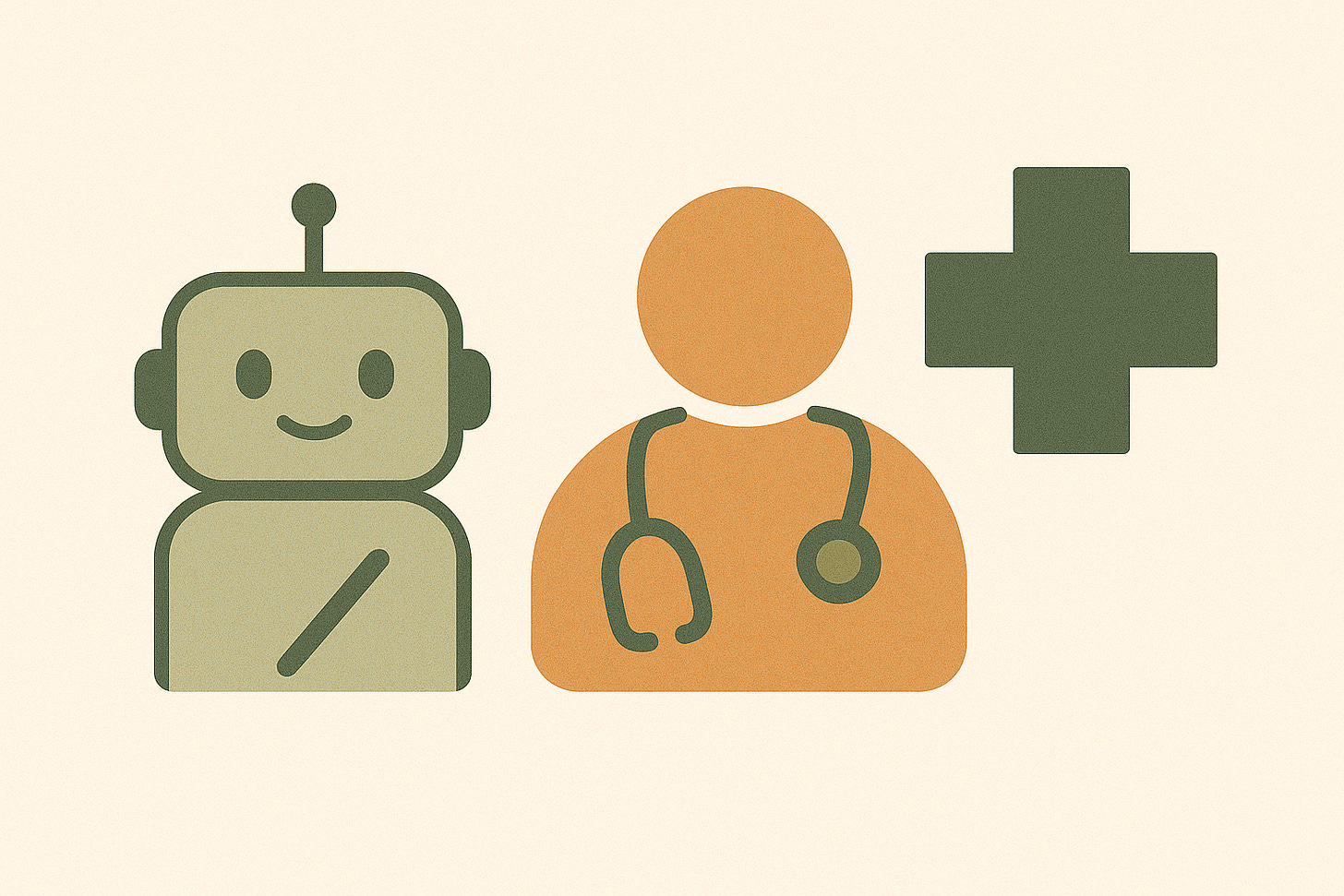Smaller, Smarter, Safer: Why the Future of Healthcare AI Might Be Small
In the world of artificial intelligence, bigger has often meant better. Are we on the brink of chasing the complete opposite, realizing that less could actually be more?
The story of recent years has been one of ever-expanding language models—more parameters, more data, more compute. Large language models (LLMs) like GPT-4 and Med-PaLM have redefined what's possible in natural language processing, including in healthcare. However, in chasing scale, have developers overlooked a more fundamental and practical question: what does truly useful AI actually look like in clinical practice?
A new survey, in preprint, The Rise of Small Language Models in Healthcare” [1], offers a compelling answer. It suggests that small language models (SLMs), typically with fewer than 7 billion parameters, may be better suited for many of the real-world challenges that define modern healthcare. These models are lighter, faster, easier to deploy, and more compatible with the values and constraints that govern clinical work - privacy, safety, transparency, and cost.
This isn’t just a theoretical argument. The paper provides a comprehensive review of over 20 existing healthcare-focused SLMs, benchmarking their performance on tasks like:
· Medical question answering, using datasets like PubMedQA, MedQA-USMLE, and MedMCQA.
· Mental health analysis, with models like MentalQLM and MentaLLaMA trained on Reddit, IRF, and social media data.
· Named entity recognition, relation extraction, summarization, and more.
No single model dominates across all tasks. But that’s not a weakness—it’s a feature. The best SLMs are task-specific, lightweight, and tuned for high performance in narrow domains. And in many cases, they match or beat larger models - all while consuming a fraction of the energy and computational resources.
The advantages of SLMs are especially evident when considering the practicalities of clinical environments. Unlike general-purpose LLMs, which often require GPU clusters and cloud infrastructure, small models can run on local machines. This makes them ideal for deployment in resource-constrained settings, such as rural clinics, edge devices, or hospitals with limited infrastructure. The researchers also claim that their low latency makes them suitable for time-sensitive decisions, like emergency triage or bedside documentation. And critically, because they don’t need to send data off-premises for inference, they support compliance with strict privacy regulations.
The environmental benefits are striking. Training a single LLM has a substantial carbon footprint. By contrast, SLMs can be optimized for “watts per inference” – perhaps a more sustainable metric for actors committed to reducing their emissions.
But smaller size doesn’t mean limited capability. The paper outlines an ecosystem of techniques that allow SLMs to punch above their weight. These include architectural innovations, such as Flash Attention and Grouped-Query Attention, as well as data-centric approaches like domain-specific tokenization and medical vocabulary optimization. Additionally, there are adaptation strategies, including instruction tuning, retrieval-augmented generation (RAG), and reinforcement learning from human feedback. Taken together, these methods enable the fine-tuning of general-purpose models into clinical specialists—models that understand the language of radiology, oncology, mental health, and other related fields.
The authors provide a taxonomy of compression techniques—knowledge distillation, pruning, and quantization—that enable the reduction of model size without sacrificing performance. Many of the most successful SLMs, such as BioMistral, Med-R², and MentalQLM, combine these strategies to achieve impressive results across a wide array of benchmark tasks. In some evaluations, they even outperform larger models, such as Med-PaLM or LLaMA-based variants, especially on tasks that require fast inference and structured domain knowledge.
Not a complete victory lap
The field is still young, and the survey effectively highlights the challenges that remain. One of the biggest is the lack of high-quality clinical training data. Many existing models rely on synthetic data or social media datasets, which can introduce biases and limit applicability in real clinical settings. Efforts to generate synthetic health data using LLMs show promise, but also raise questions about safety, reliability, and legal compliance. There is also work to be done in evaluating model behavior in a way that reflects the needs of healthcare professionals, not just accuracy, but also trustworthiness, transparency, and explainability.
Another gap is task diversity. While question-answering and classification tasks are well-represented, the researchers demonstrate that more complex and integrated use cases—such as care coordination, billing documentation, longitudinal patient monitoring, or diagnostic reasoning over multimodal inputs—are still underexplored. There's also the challenge of evaluation itself: traditional NLP benchmarks don’t always capture the nuance and stakes of clinical decision-making.
Rethinking the importance of size
Despite these open questions, the case for SLMs is strong. If LLMs represent the frontier of what’s possible, SLMs might represent the frontier of what’s useful. They are fast enough to respond in emergencies, small enough to run without a server farm, and flexible enough to adapt to local needs—all while respecting the constraints that make healthcare such a demanding and ethically charged domain.
Reading this paper, I found myself thinking less about model architecture and more about fit. Not just for the healthcare sector, but for many security and privacy-critical tasks. While everyone is chasing size, maybe we are running in the wrong direction? The value of AI isn’t just in what it can do, but in what it can do here and now. The future of healthcare AI might not be large, flashy, or centralized. It might be small, quiet, and sitting on a secure laptop at your local clinic.
For those of us working at the intersection of AI, security, and public interest, this is more than an academic debate. It’s a call to think differently about scale, success, and sustainability. And it’s a reminder that sometimes, less really is more.
References
[1] Garg, M., Raza, S., Rayana, S., Liu, X., & Sohn, S. (2025). The Rise of Small Language Models in Healthcare: A Comprehensive Survey. arXiv preprint arXiv:2504.17119. https://doi.org/10.48550/arXiv.2504.17119


